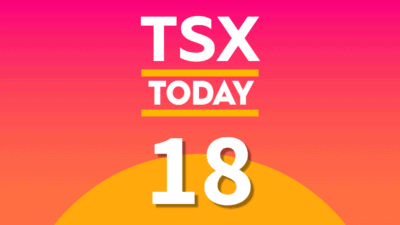In terms of investing in one sector, there are few who are argue that the midstream pipeline space is a generally risky area, regardless of macroeconomic conditions. While this is true, it does not mean that there aren’t company-specific risks related to navigating a changing landscape of oil & natural gas production in North America, and to an increasingly complex regulatory environment.
Arguably, these challenges affect TransCanada Corporation (TSX:TRP)(NYSE:TRP) more than any other Canadian midstream operator due to the fact that TransCanada is primarily a natural gas pipeline, whose assets—particularly its Canadian Mainline pipeline—no longer suit the realities of where natural gas is produced.
This leads to several major risks for TransCanada’s shareholders, which can severally affect TransCanada’s future share price. Here’s what the major risks are.
1. Regulatory risk
This is the most common risk that people are aware of thanks to the media coverage of the proposed Keystone XL pipeline. Keystone, however, while being a fairly large US$8-10 billion project, is only a small aspect of the regulatory risk TransCanada faces.
Currently, TransCanada has a total $46 billion in the capital growth program. The goal of this program is to better align TransCanada’s assets with the North American production landscape, specifically, to add more oil transport capacity to the East and Gulf Coasts and more gas transport to the West coast, so that Alberta’s natural gas producers can export natural gas to global markets as Liquid Natural Gas (LNG).
The problem, however, is that out of TransCanada’s $46 billion in capital projects, only about $12 billion are actually approved by regulators and ready to be built. The remaining $34 billion projects are awaiting regulatory approvals, and may or may not be approved. These projects include the $8 billion Keystone XL pipeline, which is awaiting Presidential approval, the $12 billion Energy East Pipeline, which faces a long road to approval, and $14 billion in natural gas pipeline projects that require new right-of-way approvals.
2. Valuation Risk
Currently, only $12 billion of TransCanada’s $46 billion capital program is approved and slated for production, and these projects are small- to medium-sized projects that are slated to be built and in service between now and 2018 at the absolute latest. These secured projects are anticipated to result in a 8% compound annual growth rate (CAGR) between now and 2017.
The problem? Beyond this point, TransCanada’s growth is entirely questionable, and if TransCanada shares begin to price in the approval of Energy East and Keystone XL, which they may have already, TransCanada could see its share price severely impacted if neither project gets approved. This would result in TransCanada’s growth outlook being very weak.
Is TransCanada pricing in the approval of these projects now? Currently, TransCanada is trading at a price-to-earnings (P/E) ratio of 23. Based on 2016’s predicted earnings, TransCanada is trading at a forward P/E of about 20, which seems reasonable, although it is on the high end of TransCanada’s forward P/E range.
With TransCanada estimating that the approval of its Keystone, Energy East, and other natural gas projects would produce a huge 16% growth rate after 2017, the current forward P/E of 20 does not seem to factor in this potentially huge growth, especially since Enbridge, which has similar but confirmed growth, is trading at a forward P/E of 25.
Analysts at RBC confirm this and estimate that Keystone XL and Energy East combined would result in a $16 growth in share price. This also means, however, that if these projects do not get approved, TransCanada could see little price growth, or potentially a decrease in price as TransCanada receives a lower multiple.







